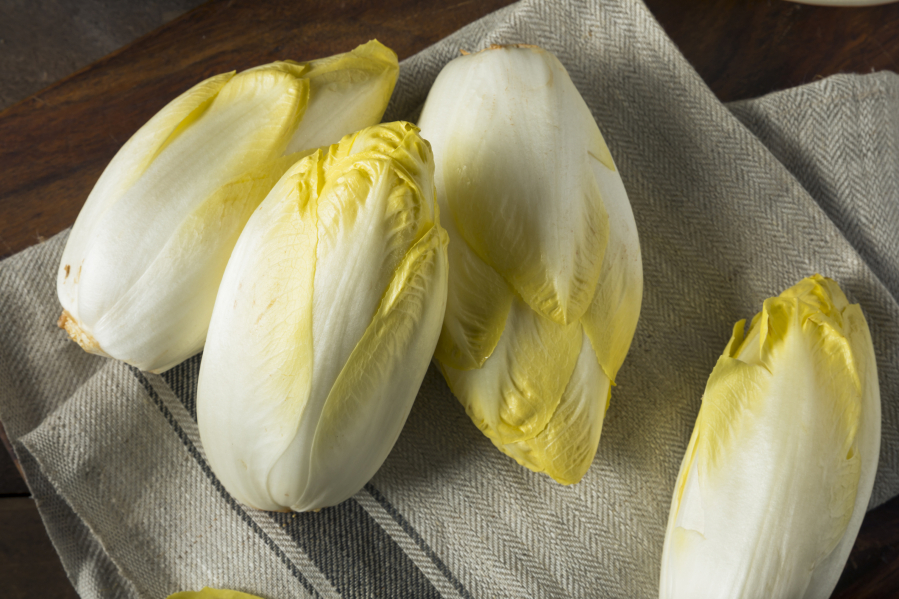As a vegetable gardener, I keep a mental scorecard that compares what I grow with what I can buy in the store. Fresh tomatoes in January? The store wins, though its thick-skinned southern imports don’t get high points for flavor. In midsummer, when my homegrown bean pods are bulging with tender, quick-cooking shell beans, I give myself a blue ribbon, because few stores sell shell beans at all.
But sometimes the differences are more subtle. Take Belgian endive, for example. Also called witloof chicory, this plant is basically the wild, blue-flowered chicory that grows along roadsides, but in this case a strain bred for forcing.
It’s sown in spring, grown in summer, then dug up in fall and induced to grow a second crop of blanched leaves during winter. The plant forms lovely, firm oval heads, pure white except for a bit of furled green at the upper edges. Unlike the bitter leaves produced outdoors in summer, these are mild and tender, with a satisfying crunch.
We’re forcing Belgian endive this winter, so I decided to compare our crops with the ones that the supermarket carries in winter.



